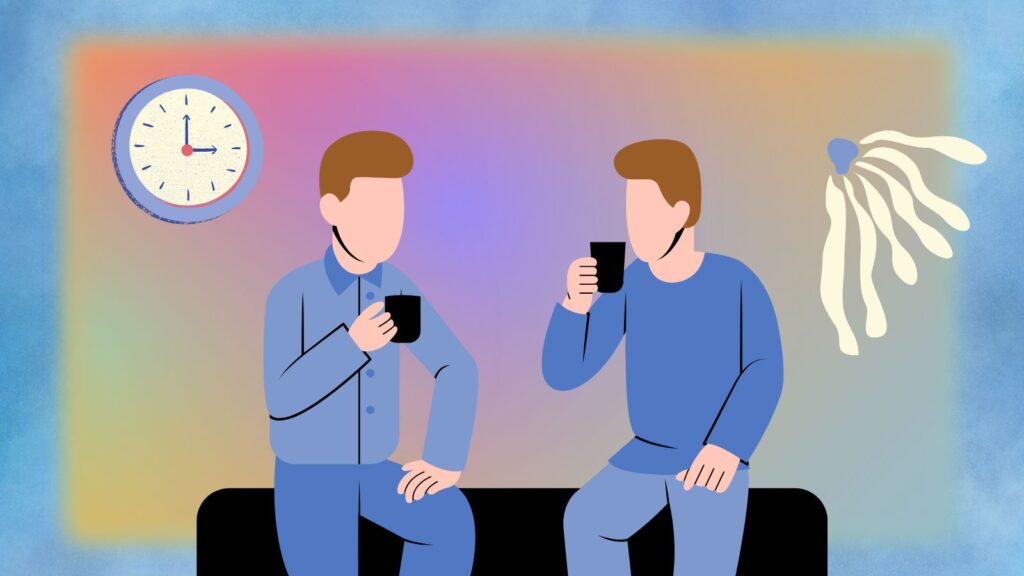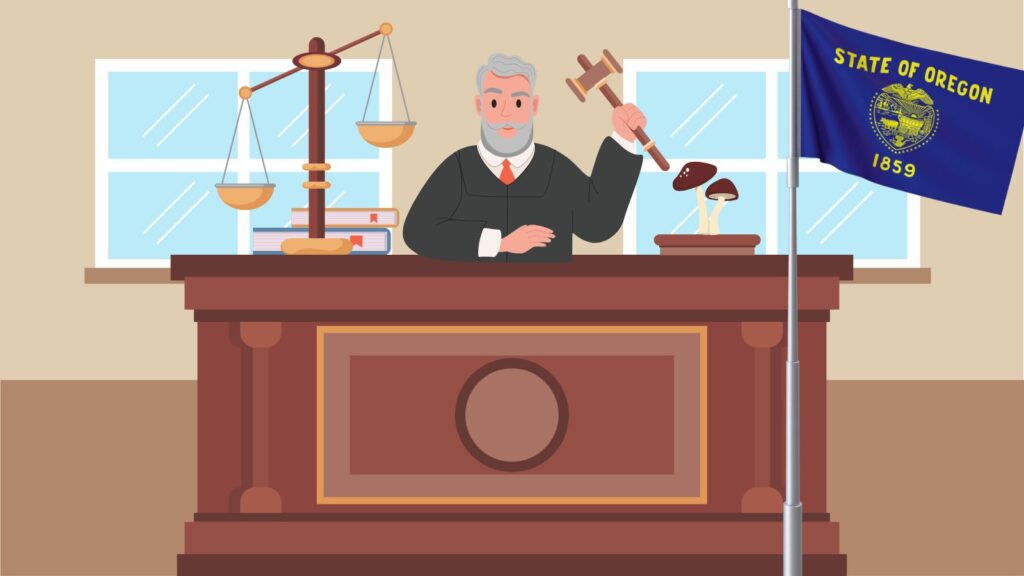Let's begin with beer. Near my home I drive past a billboard advertisement for Coors Light. The slogan is, "Coors rocks Harrisburg." Now, does anybody actually believe that Coors does in fact "rock Harrisburg?" No. Does the Coors corporation itself believe it? No. Does anyone believe that Coors believes it? No. It is a lie, everyone knows it is a lie, and no one cares. Everyone automatically writes it off as an ad slogan, an image campaign.
The next sign advertises Miller Beer with the phrase, "Fresh beer tastes better." Does anyone actually think Miller is fresher than Budweiser, Coors, or Pabst? No. Does anyone at Miller Brewing think that? No. It is another obvious and unremarkable lie, beneath the threshold of most people's awareness. But it contributes to a feeling of living in a phony world where words don't matter and nothing is real.
Here is another beer slogan, for Carlsburg: "Probably the best beer in the world." Obviously, the word "probably" has been chosen to suggest that someone devoted great consideration to this question, sampled all the world's great beers, and finally issued an impartial judgment. Of course, nothing of the sort happened. No one thinks it did. Everyone knows that actually what happened is a bunch of advertising pros thought up a slogan in an effort to create an "image." Isn't it remarkable that lies are still effective even when no one believes them? Unfortunately, when it hardly matters whether words are truth or lies, then words lose their power to convey the truth.
Continuing on my way, I drive past the Colonial Park Mall, a generic, boxy edifice amidst a vast expanse of concrete. There is no park here, nor is there actually any connection with anything "colonial," a word chosen to evoke an image of simple times, kind folk, and quality craftsmanship. The mall is home to a food court called "Café in the Park," a name chosen to evoke (who knows?) a Parisian café with outdoor tables under the shade of the trees. Basically, the entire name is a lie. No café, no park, nothing colonial. And this lie is, again, completely unremarkable.
Increasingly, words don't mean anything. In politics, campaigning candidates make statements that flatly contradict their actions and policies, and no one seems to object or even care. It is not the routine dissembling of political figures that is striking, but rather our near-complete indifference to it. We are as well almost completely inured to the vacuity of advertising copy, the words of which increasingly mean nothing at all to the reader. Does anyone really believe that GE "brings good things to life?" Or that a housing development I passed today – "Walnut Crossing" – actually has any walnut trees or crossings? From brand names to PR slogans to political code-words, the language of the media that inundates modern life consists almost wholly of subtle lies, misdirection, and manipulation.
We live in a ubiquitous matrix of lies, a sea of mendacity so pervasive that it is nearly invisible. Because we are lied to all the time, in ways so subtle they are beneath conscious notice, even the most direct lies are losing their power to shock us.
The most shocking thing about the lies of the Bush administration was that those lies were not actually shocking to most people. Why do we as a society seemingly accept our leaders' gross dishonesty as a matter of course? Why does the repeated exposure of their lies seem to arouse barely a ripple of indignation among the general public? Where is the protest, the outrage, the sense of betrayal?
It is certainly not to be found in the person of Barack Obama. Just as there is little difference between Coors and Miller, so also is there little difference in the policies of Bush and Obama. I realize that this statement will provoke outrage from many of my readers. Sure, there are some differences between them – enough to establish Obama as a new brand – but the basic course of empire, of finance, the military, medicine, law, education, of all the defining institutions of our society remains unchanged.
Significantly, during the campaign most of the media commentary on his speeches was about the image they created, their emotional effect, and not their content. Today, the content barely matters except for what image it creates. Words become merely emotive signs, not semantic ones. Therefore, even though I don't think Obama tells deliberate lies as did his predecessors, the change in the way we use and receive language makes it impossible for him to tell the truth either. Everything is heard through a filter of meta-interpretations; we hear not words but code-words, not semantic meaning but signals and "messages." Words don't mean what they mean. Speaking into such a listening, it becomes impossible to really tell the truth. Even if a politician speaks plainly, we hear an attempt to create an image of plainspokenness.
Thus it is that people detect a certain indefinable insincerity underneath Obama's words – insincerity is now built in to the language of politics. (It is also inherent in the contradictions of our civilization's deep ideology, but that is a different matter.) Playing by the rules of the political game, as Obama most definitely does, he can do naught but lie. His "hope" and "change" will be exposed as the brands they are. People will see that there is little cause to hope, and that not much has changed. The despair, cynicism, and sense of betrayal that will result will foment a dangerous crisis and, in the end, a profound renewal of public discourse that demands truth and has no patience with inauthenticity.
Above I asked, "Where is the indignation, the outrage, at the lies in which we are immersed?" Clearly, the answer lies deeper than the machinations of one or another faction of the power elite. It lies deeper than the subversion and control of the media. Part of our society's apathy arises from a subtle and profound disempowerment: the de-potentiation of language itself, along with all other forms of symbolic culture. Words are losing their power to create and to transform. The result is a tyranny that can never be overthrown, but will only proceed toward totality until it collapses under the weight of the multiple crises it inevitably generates.
As we acclimate ourselves to a ubiquitous matrix of lies, words mean less and less to us, and we don't believe anything any more. As well we shouldn't! We are facing a crisis of language that underlies and mirrors all the other converging crises of the modern age. Just as a growing profusion of material and social technology has failed to bring about the promised Utopia of leisure, health, and justice, so has the profusion of words and media failed to bring about better communication. Instead, the opposite has happened.
We are faced with a paradox. On the one hand, in a technological society, words are themselves actions. The entire modern world is built on language, on symbol. Any endeavor requiring the coordination of human activity beyond a very small scale requires language. You cannot build a microchip, run an airport or a government, wage a war, organize a peace movement, or build a wind turbine without a vast apparatus of codified instruction books, technical manuals, educational curricula, time schedules, planning documents, memos, instructions, measurements, and data. If the President decides to bomb Iran, do you know how he will do it? With words. He literally has the power to speak a war into being. Like the Old Testament Jehovah, we create the world with our words. Neither the President nor Congress really ever does anything but talk (and write). Unless you work with your hands as a carpenter or garbage collector, you are probably the same.
What are we to do, then, when words, our primary creative tool in the modern world, have become impotent? Surely political activists must ask this of themselves, as they shout the truth from the rooftops, loud and clear, to so little effect (yes there are some small victories, but the inferno rages on). We feel the urge to stop talking and get out there and DO something. But to do is to speak. An exception might be the activists who, impatient with all the talk, go out there and sabotage tractors and spike trees. Ironically, the main impact of such operations usually comes from their symbolic power, which has quickly diminished (in the public consciousness) to the status of gimmicks and stunts.
Something similar might be said of mass protests, which began to lose their power after the civil rights and antiwar movements of the 1960s. Originally, marches and demonstrations were intended not only to attract media attention, but carried the threat of actual physical action. Their essence was, "We're sick of sitting around talking, we're going to do something about this!" But as protests turned into media events, whose success was defined by the amount and kind of coverage, they became just another form of talking: they "raise awareness" and "send a message." Not since Seattle in 1998 has the physicality of street action had much of an effect. (In other parts of the world it is a different story. In China, for instance, protestors in rural villages are wont to [literally] tar and feather corrupt local officials. In Europe, mass demonstrations paralyze commerce and government.) It is not that the symbolic aspect of such actions is unimportant, but when they become wholly symbolic, the symbol loses its connection to – and impact on – reality.
It is not only that the powers that be so completely dominate the narratives of our time that any dissent seems irrational or illegitimate. The words of the dominant powers are losing their potency as well! The primary method by which governments increase their control is by creating fear. In this atmosphere, it is easy to declare new wars, impose new restrictions on freedom, make people accept new sacrifices, etc. With this in mind, I was gratified to see the utter failure of the "terrorism threat level" color-coding system to instill panic. You may have heard the message in airports: "the Department of Homeland Security has raised the terror alert threat level to orange…" Does anyone say, "Oh my God, it is orange! That's just one step short of a red alert!"? No. The words impact us as the buzzing of a fly. Another example is the recent failure of government scaremongering about the swine flu, a fine opportunity to implement mandatory vaccination programs, build mass quarantine facilities, etc.
Perhaps the most significant failure of the language of the rulers is the futility of their rosy economic pronouncements to reverse the progressive unwinding of the global financial system. (For money, too, is a story, a system of meanings and symbols that assigns roles, focuses collective intentions, and coordinates human activity.) When governments fail, such as in the breakup of the Soviet Union, a terminal symptom is the failure of the credibility of their leaders' words. When reality conflicts more and more obviously with the pronouncements of leaders, then when they say, "This shall be," no one believes that either. Laws, authority, currencies, and so on are all systems of symbols. When they break down, what remains is as Chairman Mao described: "Power comes from the barrel of a gun." That is why I think the finale of the de-potentiation of public speech will be an interlude of rule by naked force.
I note as an aside that it is not only public language that is losing its power and suffering a crisis of meaning. The same is happening to all symbolic communication. To quote from The Ascent of Humanity, "Another symptom of the breakdown of semantic meaning is the routine use of words like 'awesome,' 'amazing,' and 'incredible' to describe what is actually trivial, boring, and mundane. We are running out of words, or words are running out of meaning, forcing us into increasingly exaggerated elocutions to communicate at all."
We might say that the crisis of our civilization comes down to a crisis of language, in which words have seemingly lost their ability to create. We have all the technology and all the knowledge we need to live in beautiful harmony with each other and the planet. What we need is different collective choices. Choices arise from perceptions, perceptions arise from interpretations or stories, and stories are built of words, of symbols. Today, words have lost their power and our society's stories have seemingly taken on a life of their own, propelling us toward an end that no sane person would choose and that we seem helpless to resist. And helpless we are, when all we have are impotent words.
It is as if, as in The Emperor's New Clothes, the boy has cried, "The emperor is completely naked" and everyone hears him but no one cares. The parade marches on, an increasingly contrived and ruinous spectacle that no one, not even its leaders, truly believes in.
What, then, are we as writers, as speakers, as humans, to do? Shall we stop writing? No. But let us not labor under any illusions. The truth has been exposed again and again, but to what effect? What have forty years of correct analysis of the environmental and political state of the world brought us? The reason that the entire staff of Counterpunch, The Nation, and Truthout is not in a concentration camp is that it is not necessary. Words themselves have been robbed of their power. Thoreau said, "It takes two to speak the truth: one to speak and another to hear." Who hears now but the already-converted?
A picture is worth a thousand words – perhaps the image can rescue us from the crisis of language. Unfortunately, it cannot. The same air of unreality has come to infect the realm of images as has debilitated the power of words. In an age of virtual reality, immersive video games, on-line interactive worlds like Second Life, computer 3D animation, and routine graphic depictions of violence on screen, images of real atrocities are losing their power to shock. For the viewer, there is little observable difference between images of real violence and its on-screen simulation – both are just a set of pixels and neither impacts the viewer's off-screen reality in any tangible way. It's all happening in TV-land. Perhaps this explains the absence of any national sense of shame or soul-searching in the wake of Abu Ghraib. For many, it was just another bunch of images, just as 600,000 Iraqis dead is another string of digits.
Like words, images have become divorced from the objects they are supposed to represent, until the very word "image" itself has taken on connotations of inauthenticity: a corporate image, a politician's image. In a world of lies and images, nothing is real. Immersed in such a world, is the political apathy of the American public so difficult to understand?
The danger when we operate wholly in a world of representations and images is that we begin to mistake that world for reality, and to believe that by manipulating symbols we can automatically change the reality they represent. We lose touch with the reality behind the symbols. Grisly death becomes collateral damage. Torture becomes enhanced interrogation. A bill to gut pollution controls becomes the Clear Skies Act. Defeat in Iraq becomes victory. War becomes peace. Hate becomes love. Slavery becomes freedom.
The Orwellian ambition to render language incapable of even expressing the concept "freedom" has nearly been fulfilled. Not by eliminating the word, but by converting it into a mere image, an empty shell, a brand. How can the voices of protest be effective when everyone discounts all speech as image, spin, and hype? Whatever you say, it is in the end just words.
Take heart: the evisceration of the language that makes our tyranny impregnable also ensures its eventual demise. The words, numbers, and images over which it exercises complete control are less and less congruent to reality. Such is the folly of the infamous "Brand America" campaign, designed to burnish America's "image" abroad. The image has become more important than the reality. Bombs blow up innocent civilians to send a "message" to the "terrorists." No matter that this message exists only in the fantasies of our leaders. They are, like those they rule, immersed in an increasingly impotent world of symbol and cannot understand why the world does not conform to their manipulation of its representation, the pieces on their global chessboard.
However we play with the statistics to cover up the converging crises of our time, the crises continue to intensify. We can euphemize the autism crisis away, the obesity epidemic, the soil crisis, the water crisis, the energy crisis. We can dumb down standardized exams to cover up the accelerating implosion of the educational system. We can redefine people in and out of poverty and manipulate economic statistics. We can declare – simply declare – that the forests are not in precipitous decline. For a while we can hide the gathering collapse of environment and polity, economy and ecology, but eventually reality will break through.
As we rebuild from the wreckage that follows, let us remember the lesson we have learned. The power of the word, like all magical powers, will turn against us or wither and die if not renewed by frequent reconnection to its source.
Abstracted too many levels from its source, language maroons us in a factitious fantasy world, an unconscious story that turns us into its victims. Those of us dedicated to creating a more beautiful world must not lose ourselves in abstraction. Let us not imagine that we are more intelligent than the Neo-cons in their think tanks or the liberal professors in their universities. They are just as clever as anyone else at manipulating logic. All they say follows logically from their premises. It is the premises that are at fault, and these cannot be reasoned out. Remember that the Neo-cons too believe they are creating a better world. Only arrogance would say that we, being smarter than they are, can do better. Indeed, it is arrogance that defines them, and the opposite of arrogance is humility, and to be humble is to constantly open to new truth from the outside, from the real world and not one's interpretation of it.
That is the only thing that can keep us honest. Horror results when we get lost in a world of axioms and ideals. Many before us on left and right have reasoned atrocity out to a nicety. We stay honest by grounding ourselves again and again in the reality outside representation. When environmentalists focus on cost-benefit analyses and study data rather than real, physical places, trees, ponds, and animals, they end up making all the sickening compromises of the Beltway. Liberal economists with the best of intentions cheer when a poor country raises its GDP; invisible to their statistics is the unraveling of culture and community that fuels the money economy. Visit a real "mountaintop removal" operation and you know that there is no compromise that is not betrayal. Visit a real third-world community and the vacuity of free-trade logic is obvious. See the devastation of a bullet wound or a bomb strike, lives strewn across the street, and the logic of national interest seems monstrous.
Increasingly isolated in a virtual world, the people fear authenticity even as they crave it. Except in the young, the fear usually prevails over the craving until something happens to make life fall apart. Following the pattern experienced by Cindy Sheehan, the fundamental corruption of first one, then all of our civilization's major institutions becomes transparent. I have seen this many times in various areas of activism. Someone discovers that the pharmaceutical industry, or the music industry, or the oil industry, or organized religion, or Big Science, or the food industry is shockingly corrupt, but still believes in the basic soundness of the system as a whole. Eventually, in a natural process of radicalization, they discover that the rot is endemic to all of these and more. Each institution supports, affirms, and draws its own legitimacy from the others. So we discover eventually that the wrongness permeates every institution, and we desire to find and uproot its source.
As activists for the truth, we are midwives to this process. It is not quite true that no one heeds the boy's cry that the emperor is naked. Those who are ready to hear will hear, and they are made ready when their world crumbles. The exposing of all that is wrong serves an important purpose in guiding people from the old world to the threshold of a new – but only to the threshold, not across it. To enter into the new world requires that we recover the tools of world-creation: first and foremost, the power of word.
A nicer term for a "ubiquitous matrix of lies" would be a "ubiquitous matrix of stories." I am not suggesting that we abdicate the creative power of language. Language is an essential means to coordinate human activity, for beauty as well as for destruction. The stories we tell with words unite masses of people toward a common goal, and assign the meanings and roles necessary to attain it. To be sure, images, music, and art, both representational and non-representational, contribute to the weaving of a story, especially evoking the emotional energy that powers it, but information is indispensable as well. In a new world we will not cease to tell the story of what is and what shall be, but we will become conscious of our storytelling. The sequel to this essay will explore what I call "storyteller consciousness" on a cultural and personal level, so that we may prepare to tell the story of a more beautiful world, and to speak that world into existence as presidents and kings have spoken wars into existence for thousands of years. As these old stories fall apart, the time ripens for new ones. And the old stories are indeed falling apart, of which our increasing immunity to political and commercial speech is a symptom. No more or less significant a symptom is the crumbling of our great social institutions – education, politics, medicine, money – that are themselves built of a matrix of stories. When stories fall apart, the world falls apart.
As the crises of our age converge and infiltrate the fortresses we have erected to preserve the virtual world of euphemism and pretense, the world is falling apart for more and more people at once. The stories that have defined us and bound us are dying. We sense, as counterpart to the existential anxiety that comes as the old world and our identity within it disintegrates, an invigorating newness close at hand. So let us cease to be afraid as we stand at the threshold. It is time to learn the technologies, linguistic and otherwise, of world-creation.
Images by Jeremy Clarke, used courtesy of a Creative Commons license.













